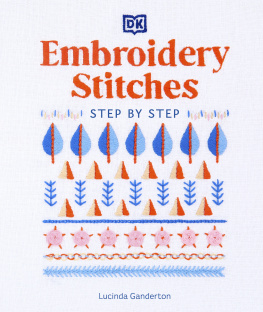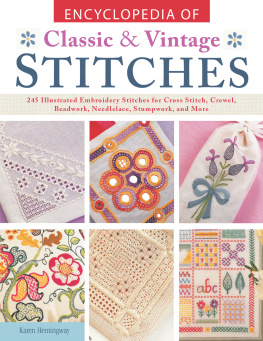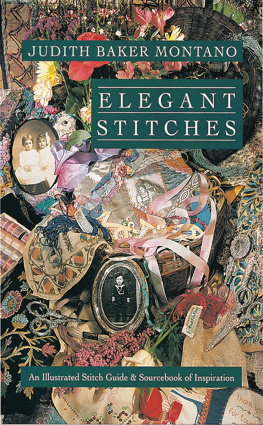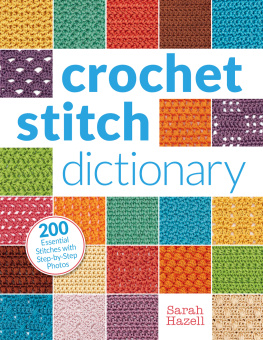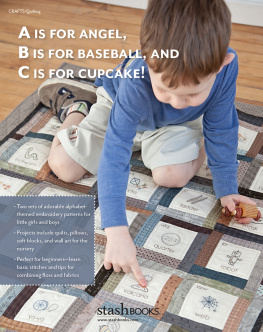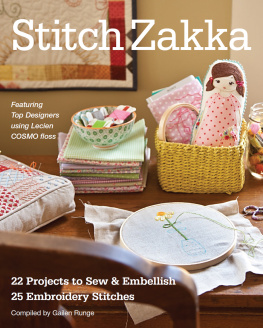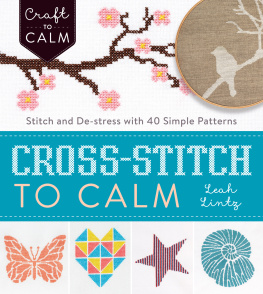SIMPLE
EMBROIDERY
by
ELSIE MOCHRIE
Copyright 2017 Read Books Ltd.
This book is copyright and may not be reproduced or copied in any way without the express permission of the publisher in writing
British Library Cataloguing-in-Publication Data
A catalogue record for this book is available from the British Library

PLATE 1.
A section from Anne Catherine Langdons sampler 1796. Kindly lent by W. R. Lethaby.
Pretty units of pattern like those shown above are always useful as they can be arranged in many ways to make complete patterns.
Contents
Embroidery
Embroidery is the handicraft of decorating fabric or other materials with needle and thread or yarn. Embroidery may also incorporate other materials such as metal strips, pearls, beads, quills, and sequins. An interesting characteristic of embroidery is that the basic techniques or stitches on surviving examples of the earliest patterns chain stitch, buttonhole or blanket stitch, running stitch, satin stitch, cross stitchremain the fundamental techniques of hand embroidery today.
In The Art of Embroidery, written in 1964 by Marie Schuette and Sigrid Muller-Christensen, they noted the striking fact that in the development of embroidery... there are no changes of materials or techniques which can be felt or interpreted as advances from a primitive to a later, more refined stage. On the other hand, we often find in early works a technical accomplishment and high standard of craftsmanship rarely attained in later times. Embroidery has been dated to the Warring States period in China (5th-3rd century BC). The process used to tailor, patch, mend and reinforce cloth fostered the development of sewing techniques, and the decorative possibilities of sewing led to the art of embroidery. Embroidery was also a very important art in the Medieval Islamic world. One of the most interesting accounts of the craft has been given by the seventeenth century Turkish traveller, Evliya elebi, who called it the craft of the two hands.
Because embroidery was a sign of high social status in Muslim societies, it became a hugely popular art. In cities such as Damascus, Cairo and Istanbul, embroidery was visible on handkerchiefs, uniforms, flags, horse trappings, slippers, sheaths, covers, and even on leather belts; often utilising gold and silver thread. It has since spread to the rest of the world, particularly the UK, where professional workshops and guilds garnered an immense reputation. The output of these workshops, called Opus Anglicanum or English work, was famous throughout Europe.
Embroidery can be classified according to whether the design is stitched on top of or through the foundation fabric, and by the relationship of stitch placement to the fabric. Several important classifications include 'free embroidery', where designs are applied without regard to the weave of the underlying fabric (such as traditional Chinese and Japanese embroidery), 'Counted Thread embroidery' where patterns are created by making stitches over a predetermined number of threads in the foundation fabric, and 'Canvas Work', where threads are stitched through a fabric mesh to create a dense pattern that completely covers the foundation fabric. This can be done on almost any fabric; wool, linen and silk have been in use for thousands of years, although today - cotton, ribbons, and organza are frequently utilised.
Whilst there is now a burgeoning market for commercial embroidery, and much contemporary embroidery is stitched with a computer using digital patterns, the art and pleasure of embroidery as a craft is making a comeback. We hope that the reader is inspired by this book to try some of their own!
SIMPLE EMBROIDERY

SIMPLE stitches such as running, herringbone, buttonhole and chain stitch, etc., with which most of us are familiar, and well-chosen materials, are all that are necessary to make really attractive embroideries. Elaborate fine work is not necessary, and the design, which usually suggests such difficulties to the beginner, is a perfectly simple matter with a knowledge of these stitches and their possibilities, as they themselves practically make the design, only a little planning and spacing being necessary.
It is only from ignorance that so many people rely on the transfer designs supplied by needlework shops. Where is the fun in working someone elses ideas? Half the interest is lost and frequently the character of the design also. The finished work lacks individuality, for hardly two people will express a design in the same way. The design and stitches, therefore, cannot successfully be separated in this way, as one helps to make the other.
Truly speaking, the design has started when the materials have been chosen, for these decide to a great extent the type of design and stitches to be used. For example, on a coarse ground material, the design would have to be fairly bold, with the stitches following more or less the threads of the material.
After the materials, the next thing to decide is where the main point of the design is to be. For instance, in shows how they are connected by adding three groups of stitchery in the intermediate spaces. The stitches will give any further details required to complete the decoration or design.

fig. 1

fig. 2

fig. 3
DRYAD

DIAG. 1

DIAG. 2

DIAG. 3

DIAG. 4
DIAGRAMS SHOWING PLANNING OF DECORATION
If all designs are treated in this way, building them up in stages, there should be no difficulties at all.
for a bedspread or cushion, and so on.
The choice of colours both in the background materials and the embroidery threads is important. Good colours are essential. Do not let them be dull ; gay colours always have a fresh, cheery appearance, and will help to brighten our frequently too dull rooms.
Many beautiful colour schemes can be taken direct from nature, from flowers, birds, butterflies, etc., and it will be very helpful to a beginner to study these and realise the value of well-combined colours and also of beautiful shapes.
STITCHES.
A description of the most useful stitches is given, all of which are illustrated on .
DESCRIPTION OF STITCHES.
1.RUNNING STITCH needs very little explanation. The length of the stitch and the intervening spaces can be varied, but must be kept regular ; worked from right to left.


